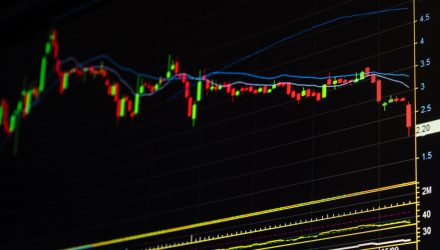2019 was another good year for ETFs, but particularly fixed income funds, which saw a deluge of activity as the U.S.-China trade war dumped a heavy dose of volatility on the markets. Investors scrambled towards what are deemed safe-haven assets in government debt, bringing yields down and bond prices up—could this create the next asset bubble?
“Looking at the financial landscape today, there are some signs of trouble: the stock market keeps going up, venture capital may also be over-valued, and firms are highly leveraged,” wrote Allison Schrager in Quartz. “But if one asset class stands out for its high prices and potential systemic risk, it’s supposedly low-risk bonds issued by governments in the US and Europe.”
Because bonds like Treasurys are backed by the U.S. government, they’re aptly deemed safe-haven assets because the likelihood of default is low.
“These bonds, in the lingo, are considered ‘risk-free,’” wrote Schrager. “By definition, then, they shouldn’t be risky. But prices for these assets have gotten very expensive. If their prices fall, meaning that yields rise, borrowers used to a long period of benign conditions will struggle to refinance their debts. And since many investors don’t hold bonds to maturity, the price of the asset matters more than the regular income payments it provides.”
That safe haven label, however, could be a misnomer as global demand for government debt has reached exorbitant levels or have they? Can it be that government debt like Treasurys have reached a boiling point in terms of their prices?
“If risk-free assets are at the center of a new bubble, it implies that safety is over-priced,” wrote Schrager. “This is a complicated concept. There are bond speculators who are betting prices will keep going up, a classic factor in a financial bubble. But to some extent, high bond prices are also driven by risk aversion. It might be that investors are too risk averse, over-estimating the amount of risk in the economy. But economists normally consider risk aversion a preference, and it is hard to argue that people’s preferences are wrong. It is also unlikely that risk aversion will suddenly disappear, the same way speculators suddenly lose faith in an asset.”
Safe Haven Debt Exposure via ETFs
ETF investors who want to tilt their allocation towards fixed income exchange-traded funds can look at ETFs like the iShares 20+ Year Treasury Bond ETF (NasdaqGS: TLT). TLT seeks to track the investment results of the ICE U.S. Treasury 20+ Year Bond Index (the “underlying index”). The underlying index measures the performance of public obligations of the U.S. Treasury that have a remaining maturity greater than or equal to twenty years.
TLT is up 15.67% YTD, according to Morningstar performance metrics.
For more market trends, visit ETF Trends.

